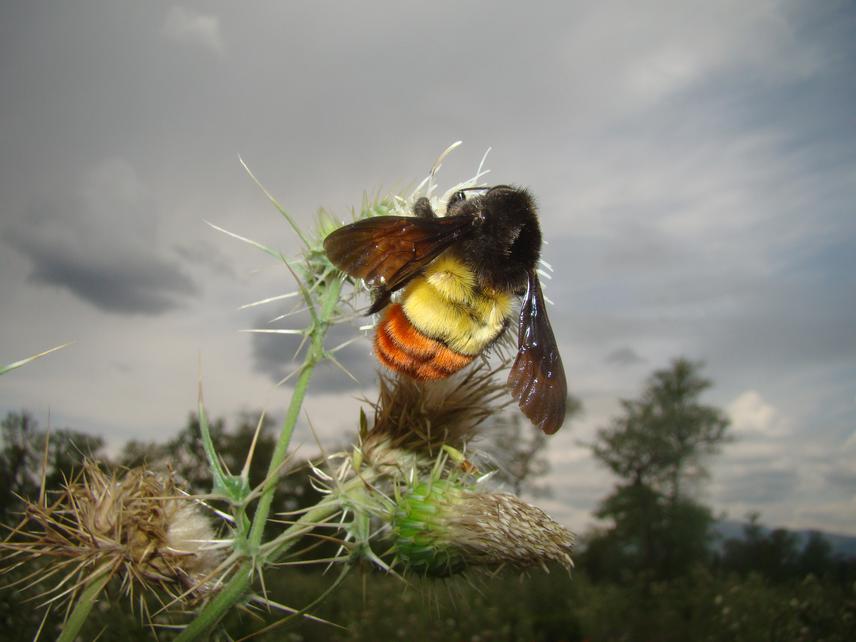Preeti Shirish Virkar
The study will identify the habitats of bees in Doon Valley landscape. Comprehending the effects of disturbances on native bee communities and their habitat will help conserve their ecological functions in the natural as well as the agricultural ecosystems. The status of bees and their habitats will be assessed and monitored by involving stakeholders. Restoration of disturbed habitats of bees will be carried out through the involvement of farmers, forest authorities, rural and urban communities.

A Bumblebee Bombus haemorrhoidalis Smith, 1852 foraging for nectar on wild thistle Cirium species in Doon Valley
Human population growth has caused the habitats of species diversity to shrink and deteriorate, increasing their vulnerability to extinction. Pollinators, especially bees too are affected by land use changes. Bees are essential for the production of approximately 70% of the most commonly consumed crops in the world. Historically, managed honeybees provided the bulk of pollination in Europe and North America, but have declined by half. Honeybees are a tiny fraction of the vast majority of non-Apis bees globally.
The decline of honeybees and rising costs to manage them have increased reliance on non-Apis bees for pollination. Research shows that non-Apis bees can provide all the pollination services required for crops when enough habitats are available. However, their community status remains ambiguous in the tropics due to habitat destruction and mismanagement. Considering the need for baseline information, distribution, habitat requirements and lack of awareness towards non-Apis bees, the present study was designed in the subtropical-temperate Doon Valley, the fragile landscape in the Indian Himalayas that is under increasing anthropogenic pressures.
The study will identify the habitats of bees in Doon Valley landscape. Comprehending the effects of disturbances on native bee communities and their habitat will help conserve their ecological functions in the natural as well as the agricultural ecosystems. The status of bees and their habitats will be assessed and monitored by involving stakeholders. Restoration of disturbed habitats of bees will be carried out through the involvement of farmers, forest authorities, rural and urban communities. Social media platforms will be established to form a network of stakeholders to monitor and keep updates on both non-Apis and Apis bees. A monitoring tool will be in place for the timely intervention of stakeholders in improving bee pollinator habitats. Involving the local stakeholders in pollinator habitat restoration programs will play a vital role in sensitizing them towards a long-term bee pollinator assessment, monitoring and conservation. The study will be a pioneer research and conservation model that can be replicated in other regions of India. The project will, therefore, strengthen not only plant reproduction in the wild and agricultural systems but also benefit the wellbeing of species up the food chains across different terrestrial ecosystems.